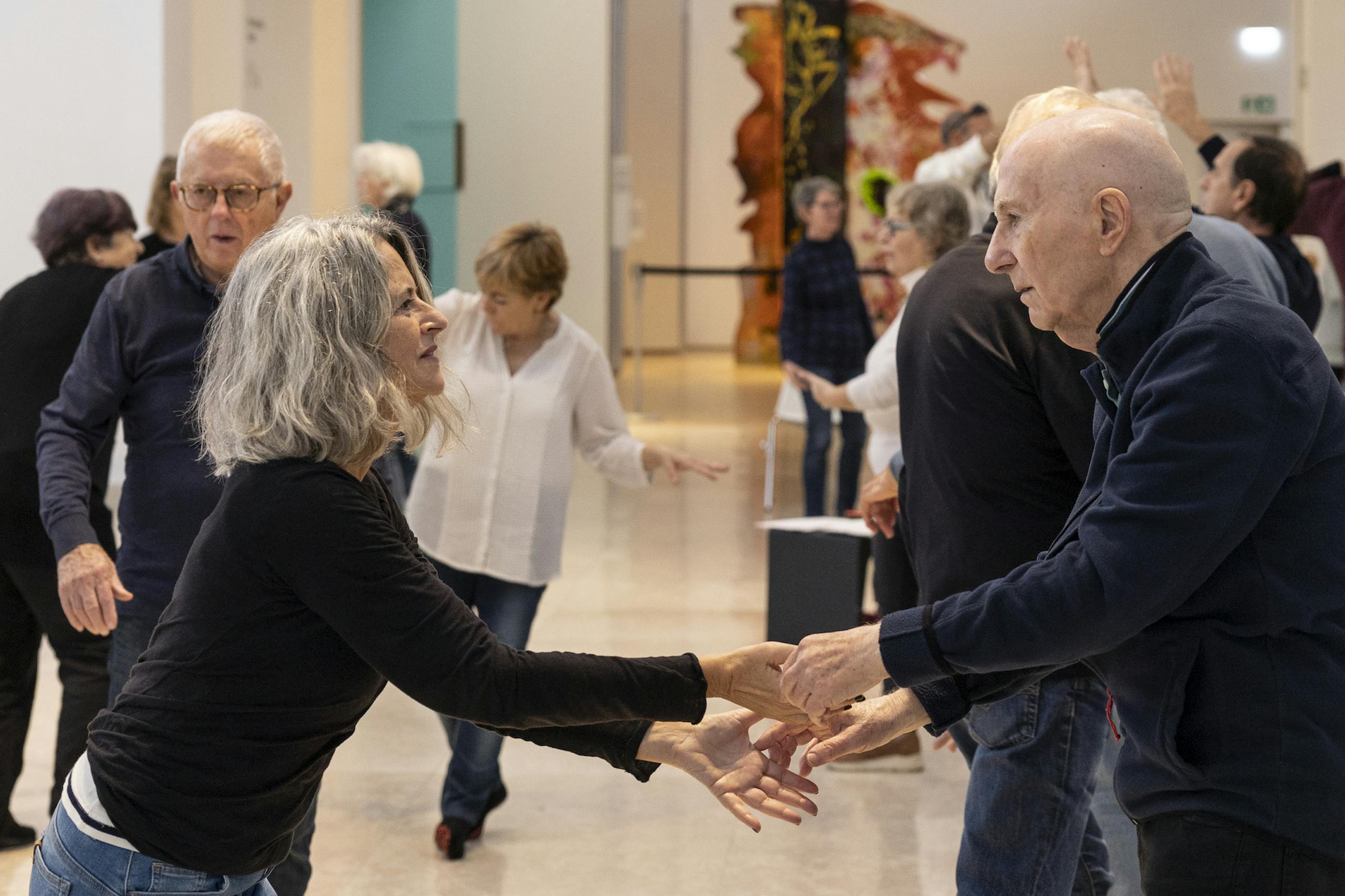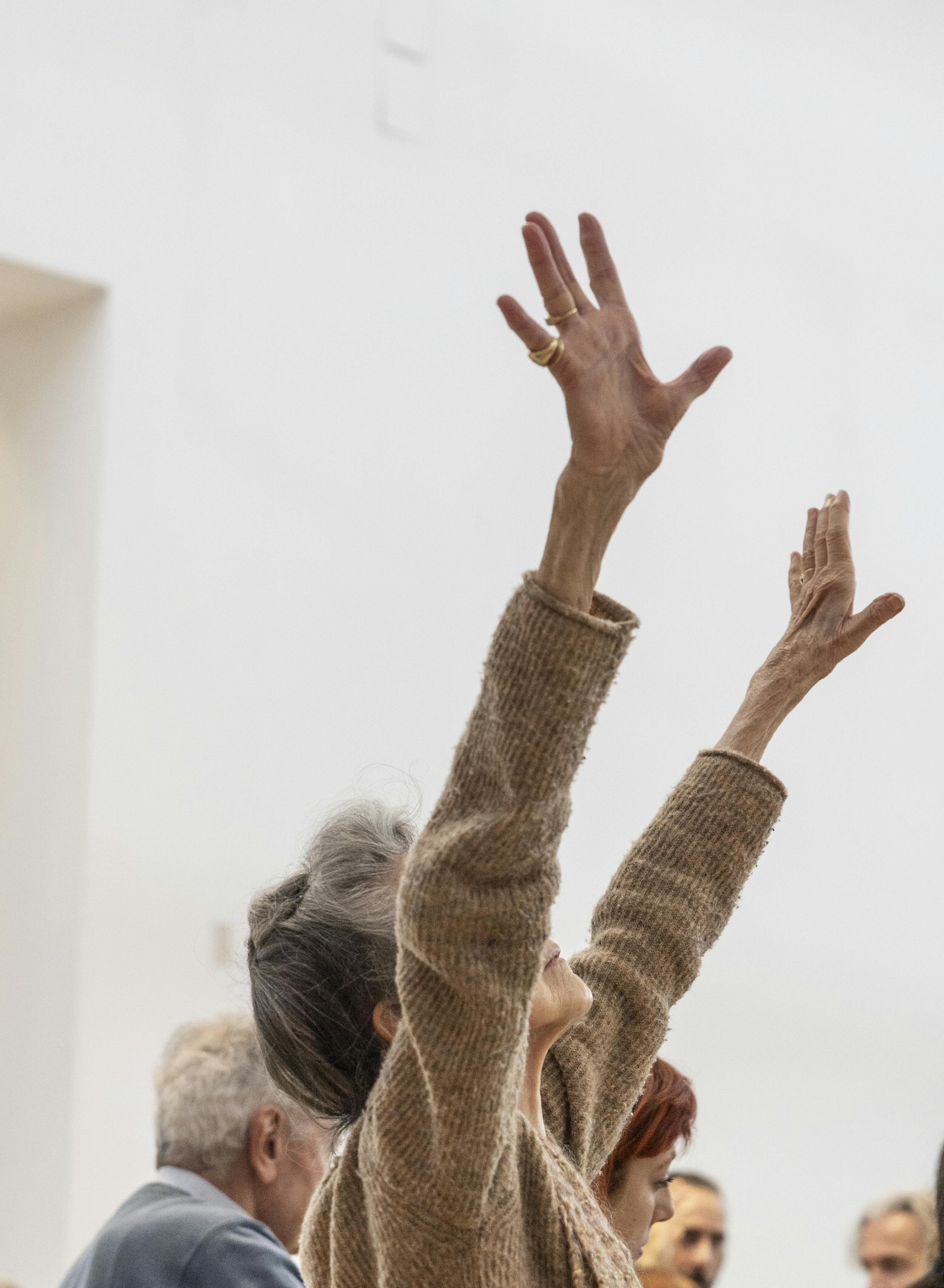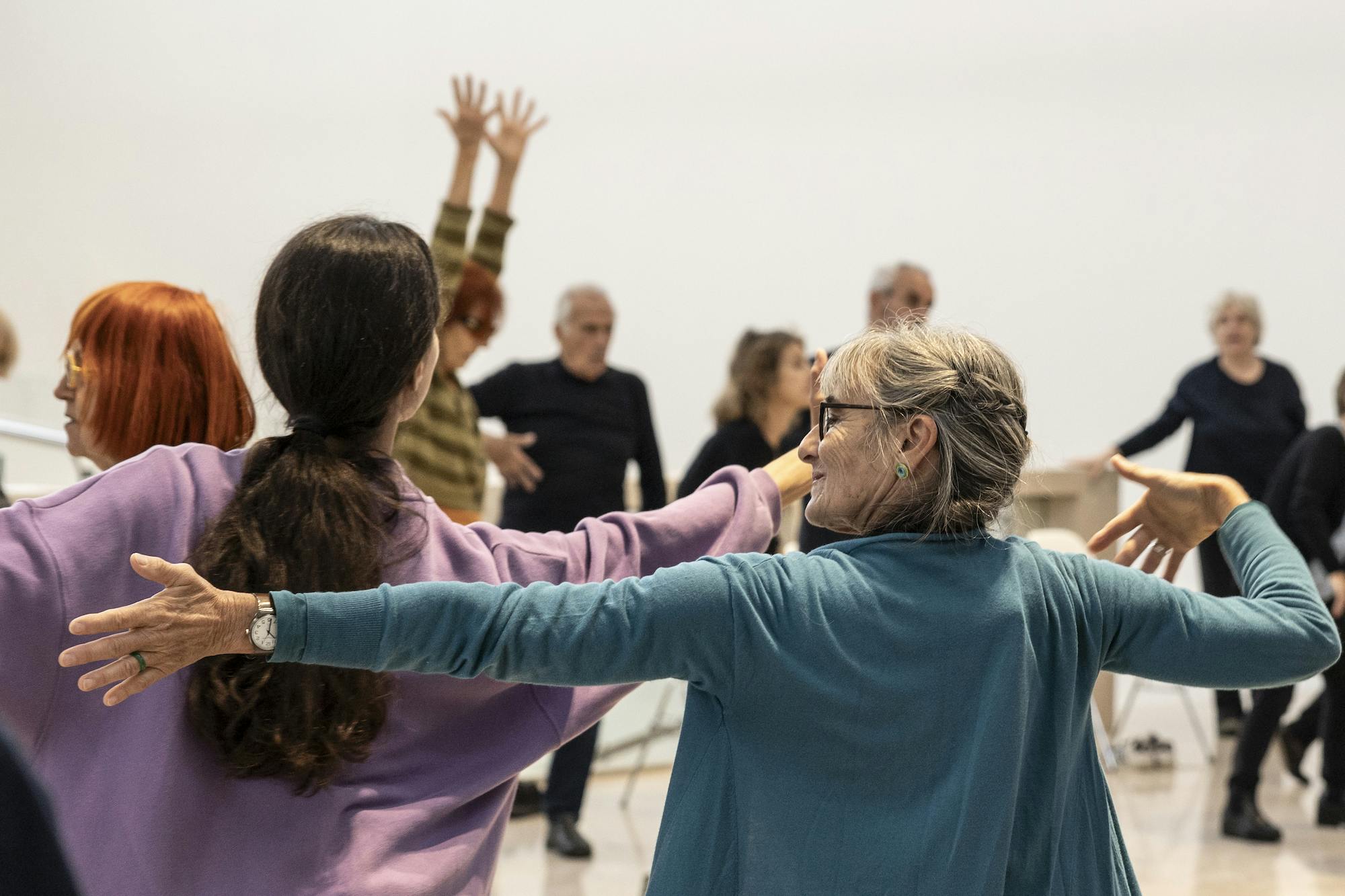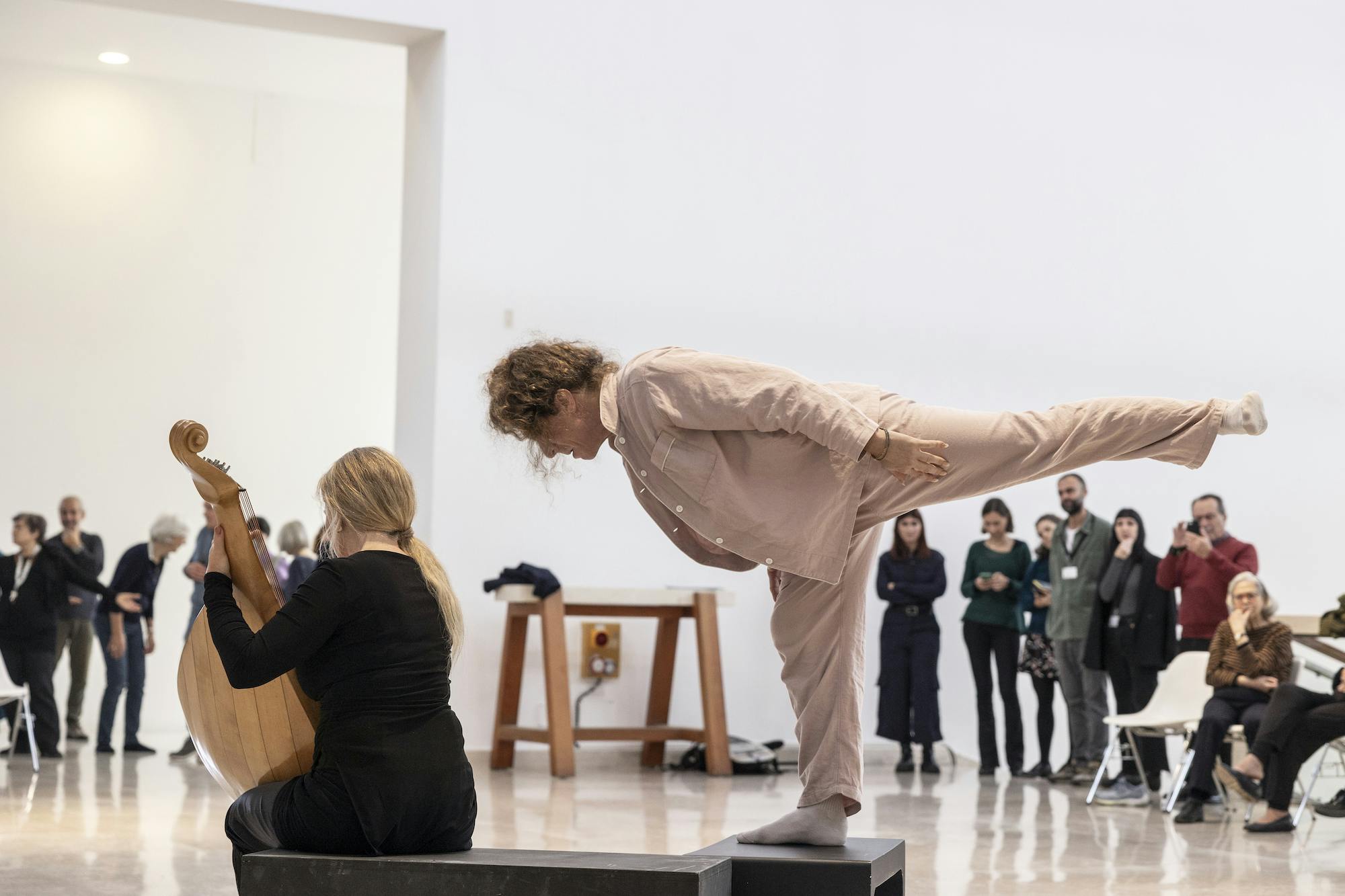

© Lorenza Daverio
Where does dance begin? Maybe gestures take over where there is a lack. We dance absences after all. When there is an empty space that we cut with movement, we are filling the cracks. In other words, we are remembering, planning, returning everything to our memories and putting everything onto a desired future plane. We are giving someone that kiss that we never gave them, we are saying sorry the way we would have liked to have done, we are listening to everything that was never said.
Dance Well in Triennale Milano
Dance begins where there is an empty space to fill. It is an act of creative will, an impulse to create something always existing as potential. All bodies can dance. Meaning they can develop that action of complementarity of all the things left unsaid and undone in life.
At least, that’s how I like to describe dance. As an energetic practice that allows us to use gestures to travel, sometimes painfully, along a path of self-awareness. As if saying, “I move, therefore I am”, I begin a rotation in and of my body in order to root myself in an undeniable phenomenological context. And in this space, I have the infinite and semi-divine power of altering time through movement, unrolling and rolling up the ribbon of my story.

© Lorenza Daverio
Dance like an intimist practice of welcoming the self and like an intimate relationship with the progression of the music, as Peter Brooke would say, or as thought-in-movement, to invoke Laban in this elegy of gesture. So you can… in fact, you should dance by yourself: be a snowflake, be a bird, even an idea, to romanticize the practice with Paul Valéry. But how much more powerful and ancestral is collective dance? To what extent is our own human history rooted in the shared ritual that exorcizes and purifies? The very foundations of mythology, which can still explain virtually every intention motivating us, lie in dance, considered as a step moving forwards, in time with a shared rhythm and breath. We must think of dance as being made up of its most distinctive material elements: a space and a time.
A space that explodes, from the intimacy of our rooms onto the crossroads of the squares, from the dance halls and theatres onto the streets. Rituals of inversion that overturn and wrong-foot the social conventions of dialogue. As if to say, for once let’s talk to each other without saying, let’s listen to each other without communicating, let’s agree without informing. Dance as an intrinsic act of transgression because it revolutionizes the permeability of feeling, opens the doors of perception, and generates a vertical and horizontal contact abandoned by the secular frenzied world. Bodies in an unusual space and in a common time, moved by a libidinal impetus. In other words, moved by the wish for a reciprocal, longed-for direct knowledge, one that is neither mediated nor delayed.
And crowning this gesture resignifying space and time, reorientating the self and the us, generating the constructive hope for something that does not yet exist, is sound. The sound that is the rhythm of breathlessness and a beating heart, that generates the true temporality of life as it unfolds. The music that pierces and shakes, according to Luigi Nono, Giovanni Pirelli and the Turinese workers in the Nuovo Canzoniere Italiano in the 1970s. Primordial music that is just drumming and noises. And on the other side, the factory workers, flung out by the primeval noise. They don’t stamp their feet – tap, tap, tap – they don’t bang the tin plates – clang, clang, clang – they don’t even hear the sheet metal falling.

© Lorenza Daverio
So their rebellion takes place by seeking gesture within the reality of its sound value. There are chamber music violins and clarinets, of course, and then there are the noises, those noises that won’t let you keep still, that make you bang and beat and go tap, tap, tap. Dancing your music, our music, finding ourselves in harmonies unknown to public sentiment, to the dominant structure, to the verbose thoughts of the masses.
That is why every body can and must dance. And this action can become an artistic practice when there is a path of learning and of trying out, like the path of the Dance Well project – movement research for Parkinson’s. This European project, supported by the European Union’s Creative Europe programme and mainly intended for people living with Parkinson’s, promotes free encounters involving dance in unusual artistic contexts and museum spaces, including the Triennale Milano. Over the past two years, there have been workshops held by specialist teachers, combined with a programme of exhibitions and shows by this cultural institution. Recently, there was also an encounter led by international artists François Chaignaud and Marie-Pierre Brébant. Through this initiative, dance has become a matter of civic engagement and a democratic project of inclusion, guaranteeing a systematic teaching approach and a fusion of different stories and aspirations. Dance Well is a celebration of our embodied individualism, an act of generosity that the participants are carrying out for themselves. It is also an ethical and political gesture because it has created community in which, for a moment, it was possible to think the unthinkable. It courageously created a possibility that seemed utopian, where the yearning for utopia should be the very heart of politics – and above all of cultural politics. Getting people with Parkinson’s to dance together – but not just them – and doing it with the seriousness of someone dedicated to an artistic practice, and then turning it into reality in a continuous search open to the unforeseeable.

Dance Well con François Chaignaud e Marie-Pierre Brébant, © Lorenza Daverio
Dance as a link between all of the opposing and apparently irreconcilable poles in our confusing daily lives: gravity and lightness, high and low, elevation and collapse, “gravity and grace”. Again, empty spaces filled with imagination, lifting your eyes from the ground along with your feet. Taking that step, sideways, forwards, and backwards, seeking that figure, amplifying that rhythm. And from the dance step, we return to the supreme metamorphic movement that is life itself.
Related events
